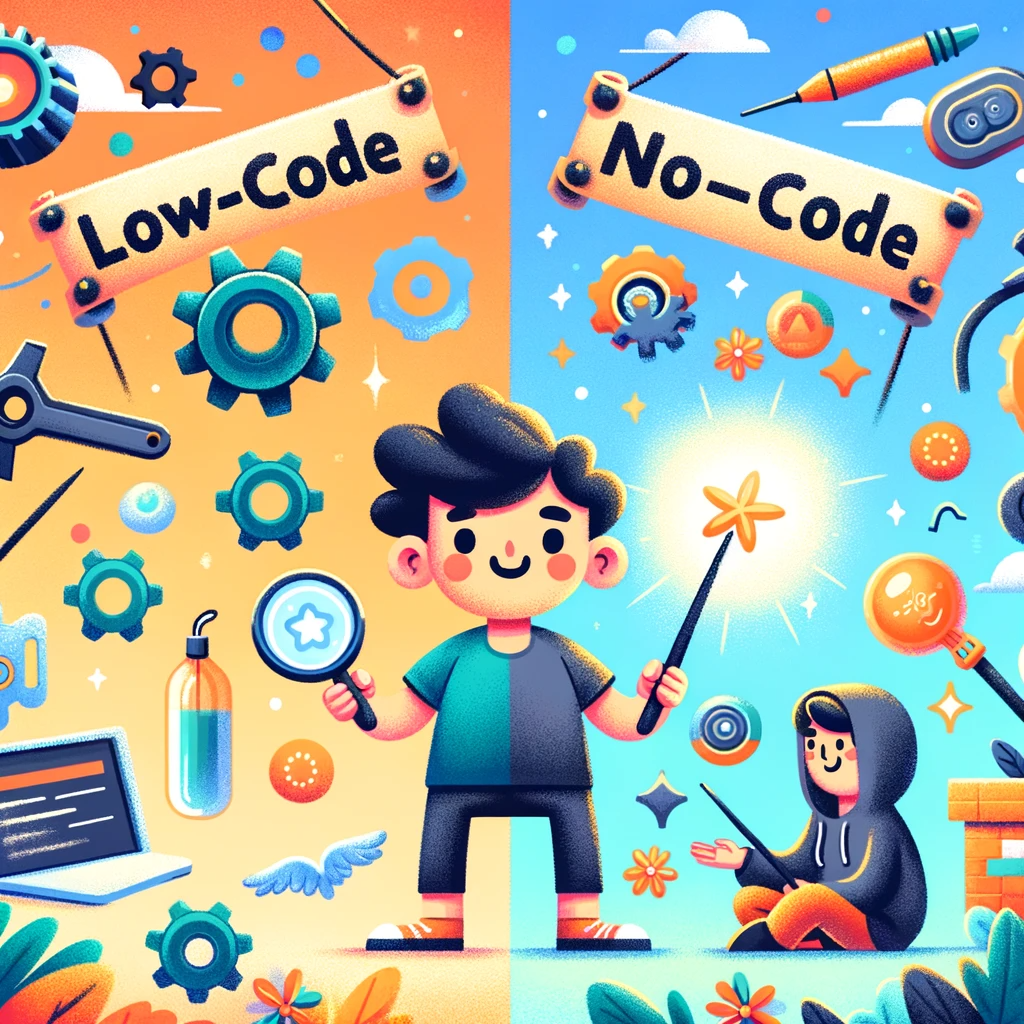
Low-Code vs. No-Code: Navigating the Automation Labyrinth with a Pinch of Humor
Introduction
Hello, fellow semi-technical enthusiasts! Today, we're embarking on a digital odyssey to compare low-code and no-code process automation tools. It's like choosing between a Swiss Army knife and a magic wand - both have their charms, but which one will get you out of the automation maze faster?

In this blog, we'll dive into the world of low-code and no-code platforms, explore their strengths and weaknesses, and find out which one suits your needs the best. So, grab your digital compass, and let's navigate this labyrinth!
The Rise of Low-Code and No-Code
The tech world is buzzing with two phrases: low-code and no-code. These platforms are the superheroes of the process automation universe. In one corner, we have low-code, the adaptable hero equipped with a utility belt of tools for those with a hint of technical prowess. In the other corner, no-code swoops in, the caped crusader for the coding novices, offering a magic wand of simplicity.
But what’s driving this rise? The demand for rapid application development has never been higher. Businesses are looking for ways to automate processes, build apps, and integrate systems faster than ever. This need for speed and efficiency is fueling the growth of both low-code and no-code platforms. According to Gartner, by 2024, low-code development will be responsible for more than 65% of application development activity.
Data-Driven Insights
Let's talk numbers, shall we? Low-code platforms can reduce development time by up to 90%, a statistic that makes even the most skeptical raise an eyebrow. On the flip side, no-code platforms offer a level of accessibility that opens the door for non-technical users to create applications without writing a single line of code.
Consider the implications in terms of resource allocation and cost. A traditional full-code approach not only requires skilled developers but also involves longer development cycles. This is where low-code platforms bridge the gap, offering the flexibility to customize with minimal coding.

The ChatGPT Effect
Enter ChatGPT, the new kid on the block. Coding has become cheaper and quicker, thanks to AI. However, maintaining the infrastructure and dealing with code migration still gives developers nightmares. That's where low-code platforms shine. They offer the perfect mix of flexibility and control, allowing businesses to stay agile without getting bogged down by the complexities of traditional coding.
But it's not just about coding. The real magic of low-code platforms lies in their ability to integrate with AI technologies like ChatGPT. This integration opens up new possibilities for automation, data analysis, and even customer interaction.
Maintenance and Migration: The Hidden Challenges
Imagine building a castle (your application) on a sandy beach (traditional coding). The tide (technology updates) can wash away your hard work. Low-code platforms are like building on solid rock - they offer stability and ease of maintenance. No-code, while tempting, can sometimes leave you stranded on an island when you need to scale or customize.
The beauty of low-code is its adaptability. Need to update your application? It's a breeze. Need to integrate new technologies? No problem. This level of flexibility is a game-changer in the fast-paced world of technology.
Why Low-Code Wins the Race
Low-code platforms are the sweet spot. They're like a hybrid car - efficient, customizable, and environmentally (budget) friendly. They empower semi-technical users to be part of the development process, bridging the gap between IT and business.
Consider a scenario where you need to build a complex application that integrates multiple systems. With a no-code platform, you might hit a wall in terms of customization and integration capabilities. Low-code, on the other hand, offers the perfect balance, allowing for customization where necessary while still providing the ease and speed of a no-code approach.
Conclusion: The Laughing Matter
Choosing between low-code and no-code is like deciding between pizza and a burger. Both are great, but it depends on your appetite (project requirements). Low-code is the pizza with all the toppings - it satisfies a broader range of tastes.
In conclusion, whether you choose low-code or no-code, the goal is to streamline your process automation journey. And remember, technology is ever-evolving, so keep your sense of humor handy. After all, laughter is the best bug fixer.
Discover More
To learn how Pludous can transform your business automation strategy, visit our website.